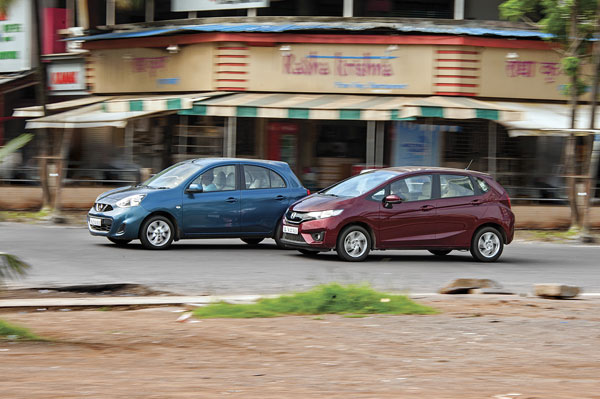The case for automatic hatchbacks hardly needs strengthening these days. A steady increase in the number of cars on our streets, the poor infrastructure that can hardly accommodate these kind of numbers and the improved fuel efficiency of modern autos when compared to older examples, are more than sufficient reasons to get yourself a two-pedal car that’s relatively diminutive and hence easy to manoeuvre. The newest arrival to this fold is the second-generation Honda Jazz. It’s the Japanese carmaker’s second coming with this model in our market, and they’ve made sure they’ve got it right this time. This premium hatchback is now packed with features, and apart from the diesel engine, Honda has covered its bases with a CVT automatic for the petrol too, giving it an edge over its main rival, the manual-only Hyundai i20. So then, what does it have in terms of competition? Well, the closest is another Japanese offering in the segment – the Nissan Micra, which also uses a CVT. The Micra has been here for some time but got a facelift in 2013 that ditched its cutesy rounded looks. So, which of these premium hatchbacks should you opt for?
On the surface
The new Jazz doesn’t look too different from the last model and it retains the sleek, space-aged silhouette that was always ahead of its time. There’s plenty of new touches though – like the chrome strip on the multi-element grille and on the boot, the ridges that run along the sides, the 3D-effect tail-lamps and the swooping roofline – and they all add up nicely. What does look odd though, are the small, 14-inch wheels and narrow tyres, especially against the Jazz’s large-for-a-hatchback dimensions.
The Micra, on the other hand, is visibly smaller. It’s no longer as cute and rounded as it used to be before 2013’s facelift, but it’s still less angular and sporty looking than the Honda. The aggressive chin and the big grille with the trademark chrome bar look nice, but won’t turn any heads like the Honda would.

























































